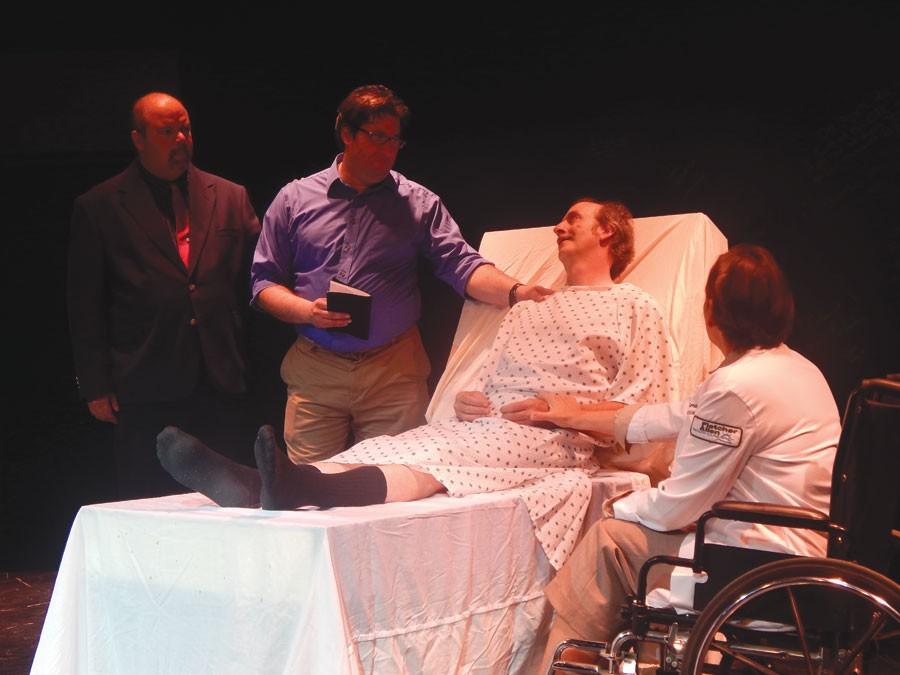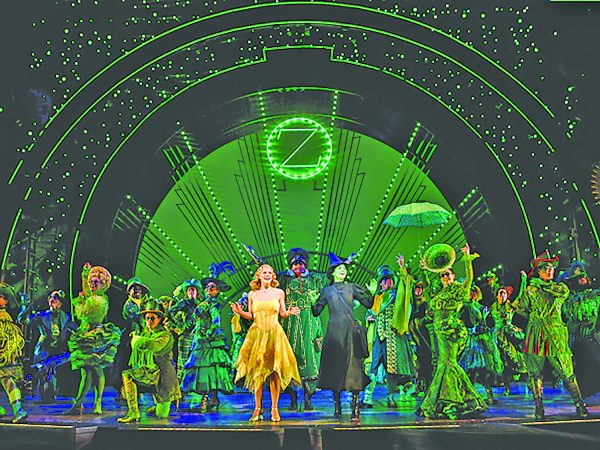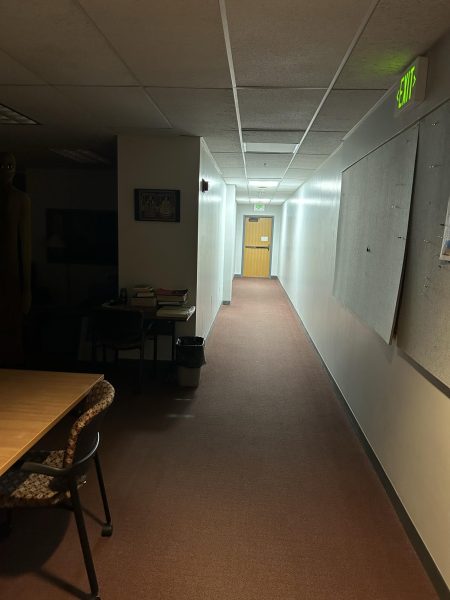“The Normal Heart” takes the audience behind the curtain
The mark of a timelessly relatable story is that it deals with issues and emotions that are still pertinent. HIV/AIDS is still an incurable disease that hits people and communities worldwide, and the grief and devastation it brings is still pertinent.
“The Normal Heart,” written by Larry Kramer, originally premiered in 1985. Taking place in New York City in the early 1980’s, it focuses on a group of gay rights activists during the HIV/AIDS epidemic and their struggle to raise awareness for the disease as it relentlessly affects themselves and those around them.
I was a bit surprised at first that the audience was lead to the right stage entrance, where the performance was to take place behind the main stage curtain. Rows of chairs were set up on the stage, all facing the set. This lack of separation added an intimate connection between the audience and the story as it unfolded directly in front of them.
The production was directed by Patrick Houle, with Mackenzie Brown as the production manager.
The background of the set, a simple black wall made of paper, stood out immediately, mainly because it had white writing scattered around it. A closer look would reveal many inscriptions in memory of people affected by HIV/AIDS, as well as statements such as “Too many, too young, too soon,” and “The human body can’t get rid of HIV.”
Houle explained that this was the cast and crew’s work, based on their personal connections with the disease. The audience was invited to add to the background after the performance.
Before the play started, Houle greeted the audience and informed them that he would be stepping into the lead role of Ned Weeks, as they lost their original actor (retired JSC Professor of Performing Arts Russ Longtin) late in the production timeline.
Houle is immediately believable as Ned, whether using self-deprecating humor or sobbing and clinging to his love interest, Felix Turner (Kenneth C. Lagro), as he is dying from AIDS.
Since he had to step in for the lead, he held a little black script book, but it didn’t distract from the performance, as he only needed to glance down to deliver his lines brimmed with emotion.
Lagro played the role of the dying Felix very well. You could feel from his expression and body language that he was weak and resigned to his fate. The purple spots on his face increase in number with each of his appearances after he is diagnosed. Towards the end of the play, he is leaning on a cane for support, limping, looking convincingly exhausted as his face sags with defeat.
The show opens with a few of the main activists in a medical examination room, including an unnamed character with purple lesions on his face who was being examined by Dr. Emma Brookner (Judith Mathison). This sets the solemn mood for the performance, as one of the activists is about to be examined for HIV.
Brookner interacts with the activist group throughout the story, as she is a prominent figure in the effort to research HIV. Mathison does justice to the frustration this character must undoubtedly feel, her face contorted and shaking with anger while spewing obscenities at a doctor interrogating her about her medical cases. Through her eye rolls, incredulous looks, and spasmodic hand gestures, the audience can feel both her outrage at this disease and the government refusing to fund research, and her determination to save the people dying under her care.
By the second scene, you’ve pretty much seen the whole set for the play; it’s a simple set that does its job without distracting from the characters and their story. The set (designed by Joshua Poland) for most of the scenes consisted of two ever-present red doors, a desk, a few chairs, a wooden hospital bed with a bedsheet over it, and a few smaller miscellaneous pieces like papers and a telephone.
The characters’ costumes (designed by Rachael Garnjost) conveyed authenticity. For example, Dr. Brookner’s doctor’s coat was from Fletcher Allen Health Care, as it was written on the sleeve, and her department name on the front of her jacket was “Infectious disease.”
Ned’s lawyer brother, Ben Weeks (Rob Weiss), is exactly what you would expect a lawyer to look like: a bald man in an expensive-looking suit jacket and tie, sporting a gold watch and rings and some facial hair. This overall look is complemented by his portrayal of the character, complete with a proper, slightly pompous accent and outbursts of anger.
One of the activists, Tommy Boatwright (Gene Heinrich), was easily the funniest character in the production, delivering hilarious one-liners that burst the audience into laughter. For example, when asked if he was a lesbian, he glanced up, tossed a few letters aside, and said, “I have done and seen everything,” and strutted out of the room. It’s easy to write this character off as comic relief, but that would be an injustice to both the character and the actor; even when the focus was not on him, he could always be seen with believable reactions to the action taking place, whether he was tense and shaking with anger or on the verge of tears while consoling Mickey Marcus, a fellow activist.
Josh Baughn, who portrayed Mickey, was perhaps most believable in the scene mentioned above, while being consoled by Tommy over the fear and panic of the epidemic. During the whole scene leading up to his breakdown, he was off to the side of the action with his lower lip shaking, as if he were about to cry. He finally bursts into a monologue about how so many people are dying and his despair that they could be next. At the end of his monologue, he shakes with anger and lunges towards Ned, while being held back by Tommy, and finally collapses to the floor while sobbing.
The other main activist, Bruce Niles (Kris Johnson) is most believable in his obvious exasperation and anger with Ned’s outbursts of rage and aggressive awareness tactics. This is evident in a scene where Ned verbally lashes out at Hiram Keebler (Shawn Weibel) as they are attempting to persuade him to get the mayor’s assistance with funding.
The lighting, also by Joshua Poland, emphasized intense and personal moments, changing from a bright yellow to solemn blue or dimming to focus a spotlight on the characters. The scene where Brookner was interrogated by a fellow doctor (Andrew Modungo) was particularly emphasized by lighting; Brookner was shrouded in a bright white spotlight, clearly the focus of the scene, while the other doctor was lit with red.
The transitions between scenes were punctuated by ’80’s songs (such as “Never Gonna Give You Up” and various Michael Jackson hits) being played through the stage speakers, setting the time period effectively. The sound design was by Patrick Monaghan.
Overall, the show wonderfully captured the hysteria, confusion, and frustration of the AIDS epidemic— trying to find out where the virus comes from, who carries it, how it’s spread, let alone finding a cure or a vaccine for the disease. It highlights two extremely different and contrasting methods of raising awareness: Ned’s outrage and protests of anger versus the other activists’ gentle persuasion and compromise. It brings to light the conflict of hiding sexuality versus embracing and flaunting it. The actors and the crew delivered a believable and authentic performance that is not easily forgotten.






